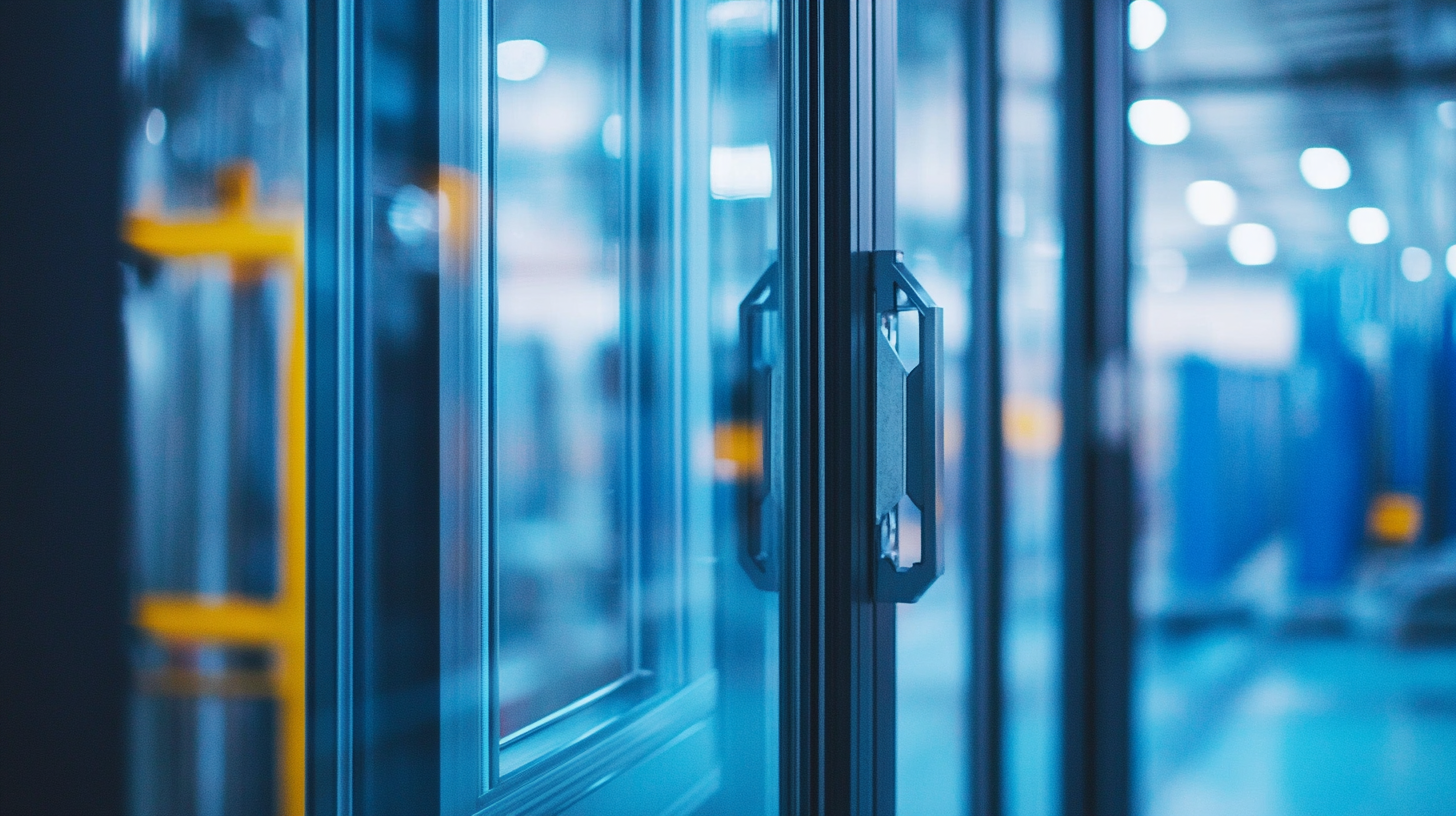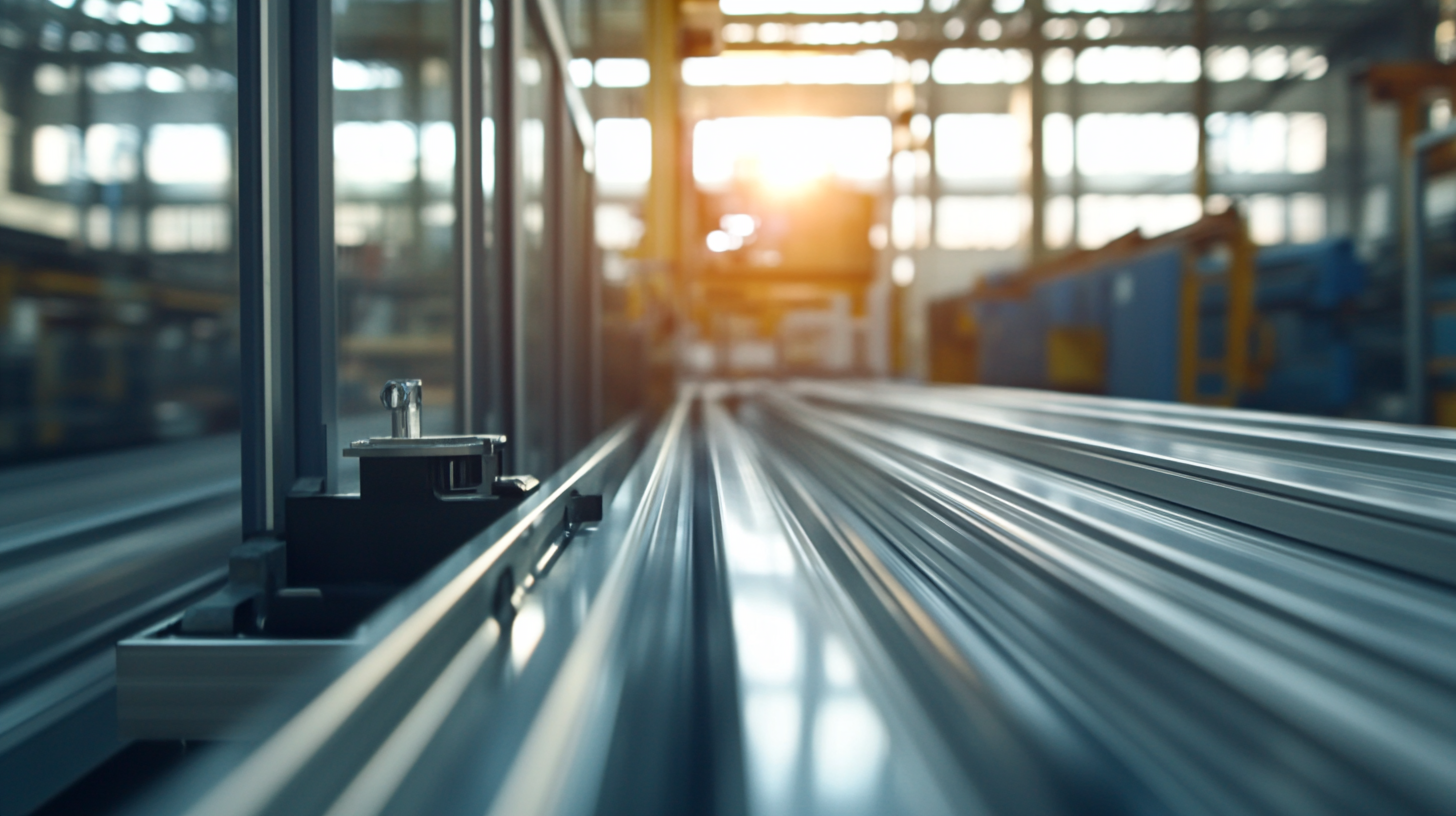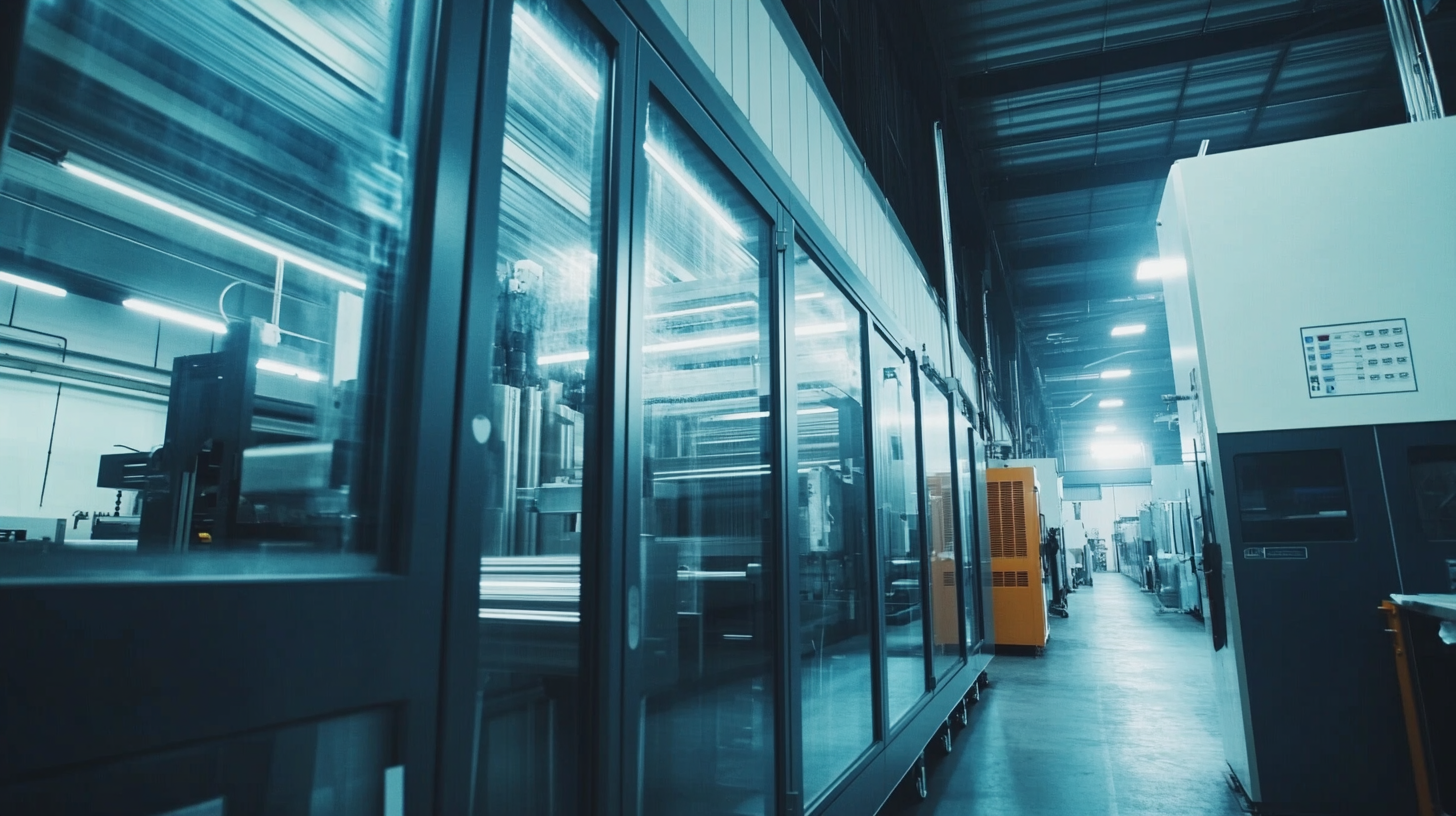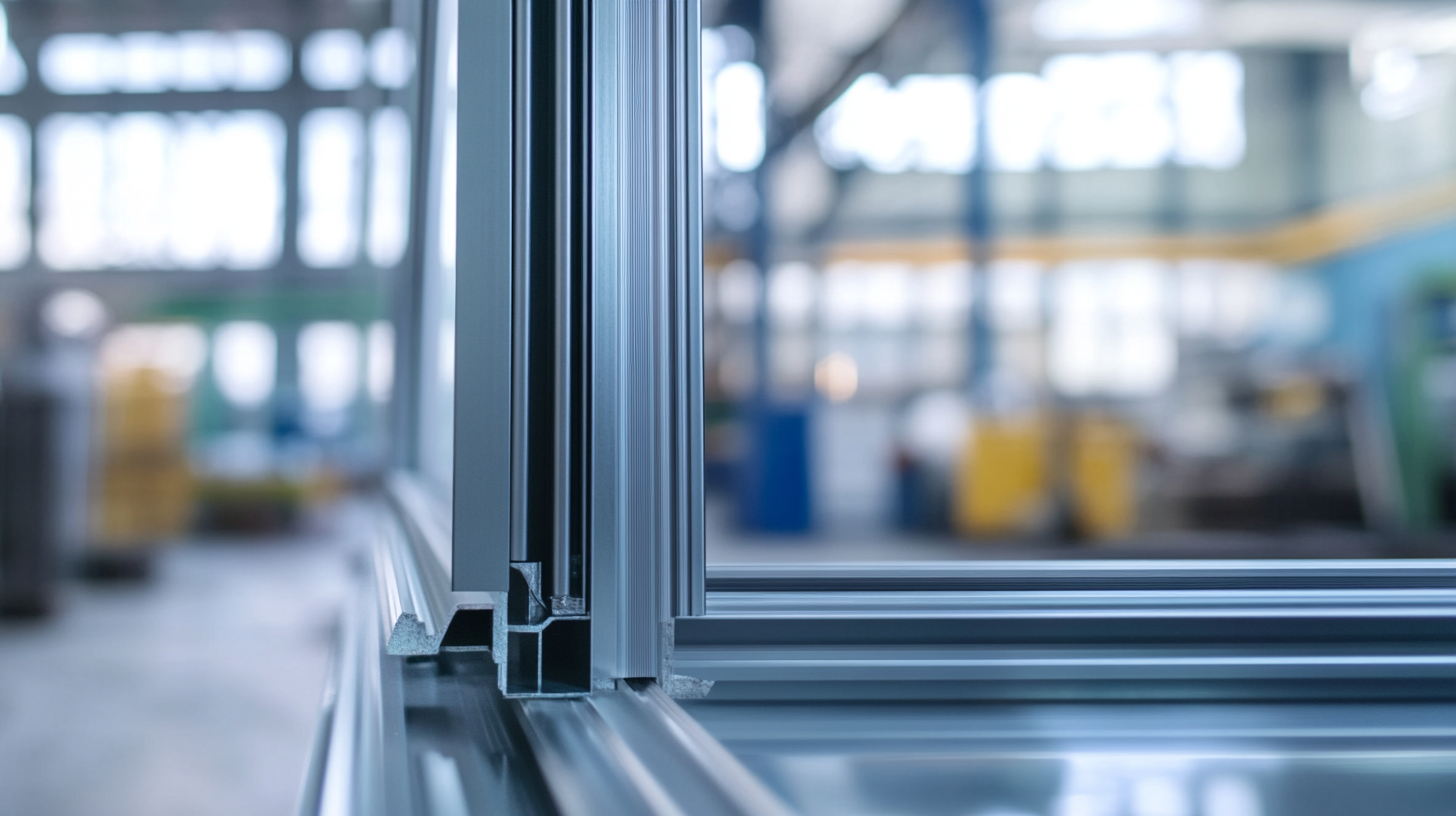Exploring the Unique Features and Applications of Aluminium Door Window Manufacturing Equipment
The increasing demand for energy-efficient and aesthetically pleasing architectural solutions has propelled the aluminium door window manufacturing sector into a significant growth phase. According to a report by MarketsandMarkets, the global aluminium windows and doors market is expected to reach USD 128.93 billion by 2026, with a compound annual growth rate (CAGR) of 4.9% from 2021. This surge signifies not only a heightened consumer preference for aluminium products due to their durability and low maintenance costs but also the emergence of advanced manufacturing technologies. The Aluminium Door Window Manufacturing Machine plays a pivotal role in this dynamic landscape, allowing manufacturers to streamline production processes and enhance product quality.
As the industry evolves, the integration of automation and sophisticated machinery has become essential to meet the rising consumer expectations and stringent regulatory standards. The Aluminium Door Window Manufacturing Machine incorporates state-of-the-art technology that optimizes efficiency and minimizes waste, ultimately contributing to a sustainable manufacturing framework. Industry experts note that investments in advanced manufacturing equipment can lead to significant long-term savings, reducing operational costs by up to 20%. This blog will explore the distinctive features and applications of aluminium door window manufacturing equipment, shedding light on how these innovations are shaping the future of the construction and home improvement industries.

Key Technologies in Aluminium Door Window Manufacturing Equipment
The manufacturing of aluminium door and window equipment is rapidly evolving, driven by advancements in technology and changing market demands. In this context, key technologies play a pivotal role in enhancing production efficiency and product quality. Automated fabrication systems, for instance, streamline the process, allowing for precise cutting and assembly, significantly reducing labor costs and time. These systems are often equipped with smart sensors and IoT capabilities, enabling manufacturers to monitor the production line in real-time, thus increasing operational efficiency. Additionally, innovations in material processing techniques, such as advanced extrusion methods, have led to the development of stronger and more durable aluminium components. This not only improves the longevity of the products but also meets the evolving needs of consumers for energy-efficient and environmentally friendly constructions. With the global aluminium door and window market projected to maintain substantial growth, investing in state-of-the-art manufacturing equipment is essential for companies to remain competitive. Moreover, the integration of sustainable practices within manufacturing processes has become increasingly important. Technologies that reduce waste and energy consumption are not only beneficial for the environment but also enable manufacturers to meet regulatory requirements and market demands for green building materials. As the industry faces challenges such as declining revenues, exemplified by recent reports from companies like Senyang Windows, it is crucial for manufacturers to leverage these technological advancements to diversify their product offerings and improve profitability in a challenging economic landscape.

The Importance of Precision Engineering in Aluminium Fabrication
Precision engineering plays a crucial role in the manufacturing of aluminium doors and windows. In this industry, the characteristics of aluminium, including its lightweight and durability, make it a preferred choice for builders and designers. However, to fully leverage these advantages, the production process requires meticulous attention to detail. High-precision machinery and tools ensure that every component is manufactured to exact specifications, minimizing errors and maximizing efficiency.
The significance of precision in aluminium fabrication cannot be overstated. Each cut and weld must be executed flawlessly to create a product that not only meets aesthetic expectations but also complies with structural integrity standards. Advanced manufacturing equipment, such as CNC machines, allows for automated precision in shaping, drilling, and finishing aluminium profiles. This automation reduces human error and enhances production speed, ultimately leading to better quality outcomes and reduced material waste.
Moreover, the importance of precision engineering extends beyond just the manufacturing process. It also impacts the installation and performance of aluminium doors and windows. A well-fabricated product ensures a proper fit, improving insulation and security while minimizing the risk of future maintenance issues. As the demand for energy-efficient and sustainable building solutions continues to grow, the role of precision engineering in aluminium door and window manufacturing will only become more critical, driving innovation and excellence in the field.

Innovative Applications of Aluminium Doors and Windows in Modern Architecture
The modern architectural landscape has seen a dramatic evolution with the innovative applications of aluminium doors and windows, largely driven by their unique properties and versatility. According to a report by Allied Market Research, the global aluminium doors and windows market was valued at approximately $60 billion in 2021, and it is projected to reach nearly $90 billion by 2030, growing at a CAGR of 4.9%. This increase can be attributed to the material’s strength-to-weight ratio, exceptional durability, and resistance to corrosion, making it an ideal choice for a variety of architectural designs.
Aluminium doors and windows offer significant aesthetic value in contemporary architecture, providing sleek lines and a modern finish that enhances the exterior and interior appeal of buildings. Their ability to accommodate large glass panels without compromising structural integrity allows architects to design spaces filled with natural light, which is increasingly sought after in residential and commercial constructions. According to the World Green Building Council, buildings that maximize natural light can enhance occupants' productivity by up to 15%, further agreeing with the growing trend of integrating these elements into design.
Sustainability is another critical aspect driving the demand for aluminium doors and windows. With recycling rates for aluminium exceeding 75%, as reported by The Aluminium Association, the material contributes to environmentally friendly building practices. Moreover, advancements in coating and thermal break technologies have made it possible to achieve higher energy efficiency, vital in meeting modern energy standards. As architects continue to seek sustainable solutions, aluminium is likely to become a cornerstone material in eco-conscious design, shaping the future of construction.

Sustainability Considerations in Aluminium Manufacturing Processes
As sustainability becomes an increasingly urgent global concern, the aluminium manufacturing industry is responding with innovative practices that minimize environmental impact while maintaining efficiency. The production of aluminium door and window manufacturing equipment plays a critical role in this transformation. By integrating sustainable materials and adopting energy-efficient technologies, manufacturers are reducing carbon emissions associated with the creation of these vital components.
One significant aspect of sustainability in aluminium manufacturing is the emphasis on recycling. Aluminium is a highly recyclable material, and its lifecycle can be extended through robust recycling processes. This not only conserves natural resources but also significantly decreases energy consumption compared to producing new aluminium from ore. Advanced manufacturing equipment has emerged that facilitates the use of recycled aluminium, enabling manufacturers to produce high-quality products while adhering to eco-friendly practices.
Moreover, the design and production of aluminium door and window systems are increasingly incorporating sustainable features such as thermal insulation and energy efficiency. By utilizing innovative manufacturing equipment that allows for precise specifications, companies can produce products that not only meet but exceed building codes for energy efficiency. This commitment to sustainability not only benefits the environment but also aligns with consumer demands for green products, ultimately driving the industry towards a more sustainable future.
Future Trends in Aluminium Door Window Manufacturing Technology
As the demand for energy-efficient and aesthetically pleasing architectural elements rises, the aluminium door and window manufacturing industry is experiencing transformative shifts driven by advanced technologies. One of the most promising trends is the integration of automated systems that enhance precision and reduce production time. These automation solutions not only streamline the manufacturing process but also ensure high-quality output, minimizing wastage and maximizing efficiency.
Another significant trend is the increasing use of smart technologies within aluminium door and window systems. Manufacturers are incorporating sensors and IoT devices into their products, enabling features such as automatic locking, energy monitoring, and environmental control. These innovations not only improve the functionality of the final products but also appeal to eco-conscious consumers looking to reduce their carbon footprint.
Additionally, the use of sustainable materials and recycling processes is gaining traction in the industry. Manufacturers are adopting eco-friendly practices, such as using recycled aluminium and energy-efficient manufacturing processes, to align with global sustainability goals. By focusing on environmentally responsible practices, manufacturers can attract customers who prioritize sustainability in their purchasing decisions. As these trends continue to evolve, the aluminium door and window manufacturing industry stands poised for a future defined by innovation and sustainability.

